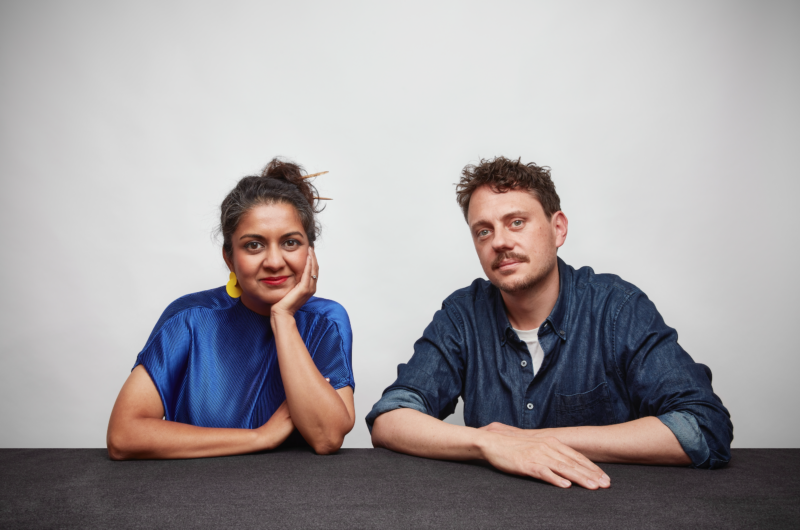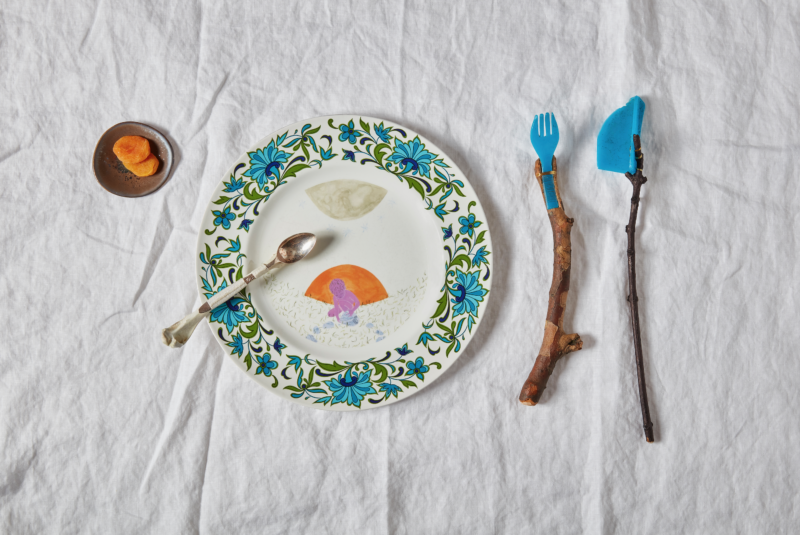The studio’s exploration of myth and renewal offers us a new perspective on the climate crisis
 Photography by Mark Cocksedge
Photography by Mark Cocksedge
Words by Owen Hopkins
According to the polling company YouGov, when asked the question ‘If you could travel in time and live in another era, would you rather go to the past or to the future?’ some 55% of Britons responded the past, and only 28% answered the future. The remaining 17% didn’t know, perhaps content with the present. For almost all of human history our forebears were driven by the belief that the future would be better than the present. Now, it seems, we’re not so sure.
The London-based multidisciplinary studio Superflux sees things differently. ‘With uncertainty,’ argue studio founders Anab Jain and Jon Ardern, ‘comes opportunity for positive change.’ At pains to distinguish its outlook from the technological solutionism of Musk, Bezos et al, Superflux sees its practice as a form of questioning, rather than of providing neatly packaged answers. ‘We design questions,’ as the founders succinctly put it.
Refuge for Resurgence, a project Superflux produced for the 2021 Venice Architecture Biennale in response to its theme How Will We Live Together?, shows what this means in practice. As Ardern says: ‘We’re interested in the ideas that frame our relationship to the natural world, which are perhaps at the root of the problems we are causing: thinking of ourselves as separate from the wider ecology and seeing that as something to be exploited and monetised. We were interested in exploring what kind of mytho-poetic shift might lead us to a different relationship to the natural world.’
 Photography by Gregor Hofbauer / Superflux
Photography by Gregor Hofbauer / Superflux
The result was a ‘multispecies banquet’: a roughly-hewn, 4m-long oak table with places laid for three humans – man, woman and child – joined by a fox, rat, wasp, pigeon, cow, wild boar, snake, beaver, wolf, raven and mushroom.
Only the mushroom, wasp and (taxidermied) raven are present, with the viewer left to infer the identity of the other guests through delicately wrought clues laid out on the table. A specially produced soundscape brings the tableau to life, conjuring for the viewer, as Ardern puts it, views into ‘other worlds that might feel enigmatic – or even magical.’
This notion of a more than human future is fashionable right now, yet rarely is it explored in such a visceral way or in a form that looks back as well as forward. After all, although sharpened in the 20th century, our anthropocentric view of the world dates back at least from the Enlightenment, perhaps as far back as the Renaissance. Extending beyond that philosophical outlook also makes space for the return of what it repressed in order to bring itself into being: myth, magic and the mystical.
‘I am more interested in the idea of the mythical than the magical,’ Jain notes. ‘A lot of modern-day technologies have been delivered under the cloak of magic. It is intentional that we don’t know how something works, where data is stored and the decisions made on our behalf. Magic is a very clever trick to keep us as complacent users.’
 Photography by Mark Cocksedge
Photography by Mark Cocksedge
She continues: ‘On the other hand, mythical narratives have a rich oral history. They were a way of connecting human and non- human communities way before we had magical technology. We are interested in what sort of stories, myths and narratives might bring us together to find a way through this predicament that is climate change.’
So much of the discourse surrounding the climate emergency and the fundamental changes required to deal with it is manifested in terms of loss. While this was certainly present in Superflux’s project for the Vienna Biennale for Change 2021, Invocation for Hope, it also offers the prospect, as its title suggests, of hope, renewal and even of something gained.
On show at Vienna’s Museum of Applied Arts (MAK) during summer 2021, the installation drew visitors through a grove of fire- blackened trees to a kind of verdant sanctuary in its heart where multiple species live in harmony. Glancing into the freshwater pool, you see not a reflection of your own face but a spectral vision of another creature coming to drink.
For Ardern, work like this is about ‘bringing the body and the mind together.’ He says: ‘We don’t create objects – we bring people into a space and allow them to reach new perspectives on a situation. Ideas that are explored solely in the intellectual arena are so easy to park there. We’ve seen that with climate change. You can look at a graph that is terrifying. But it doesn’t cut very deep; it lacks the ability to inspire action.’
 Photography by Gregor Hofbauer / Superflux
Photography by Gregor Hofbauer / Superflux
We speak the month before the COP26 summit in Glasgow, which observers from across the world are looking on with both hope and trepidation.
‘The Paris climate agreement,’ Jain notes, ‘reflected a kind of climate revanchism: the desire of businesses and governments to make a claim for climate reform but still operate in a capitalist framework. The goal of being net zero by 2050 is so far removed from any individual’s career, we may just be passing the buck again. I believe people going there want to see change happen, it’s just how fast it can happen.’
Part of the challenge, of course, is that even among those who believe fervently in the need for urgent action, there is a startling contrast in what form that action should take. On the one hand, there’s the ‘steady state’ approach of dealing with climate change via existing systems and, on the other, wholesale revolution. Can there be a middle ground?
‘There has to be,’ Ardern is quick to answer. ‘The climate emergency requires radical change but we have to start from where we are. It is not a problem we can “solve” but rather a predicament we must navigate with responsibility and urgency.’
Get a curated collection of design and architecture news in your inbox by signing up to our ICON Weekly newsletter
This article was originally featured in ICON 206: Winter 2021. Read a digital version of the issue for free here















